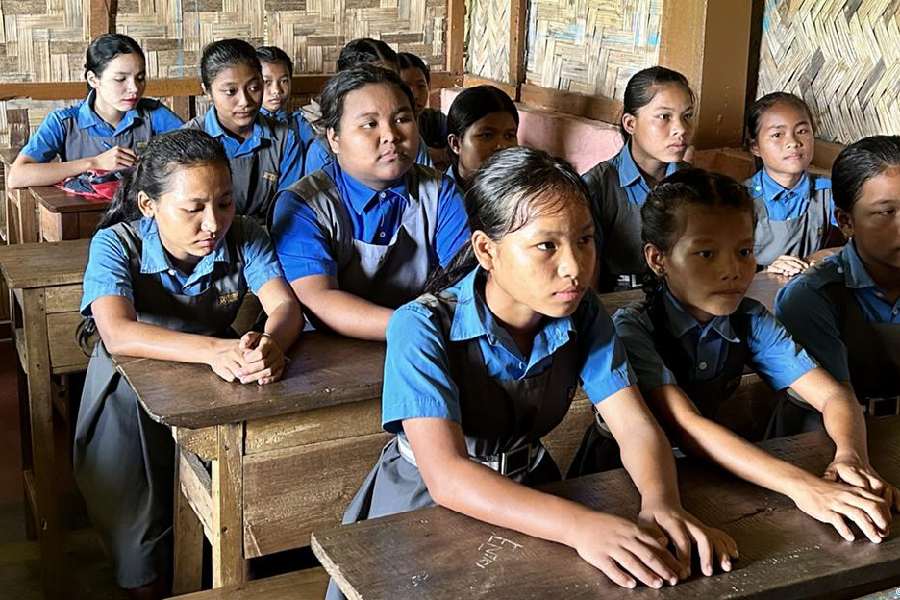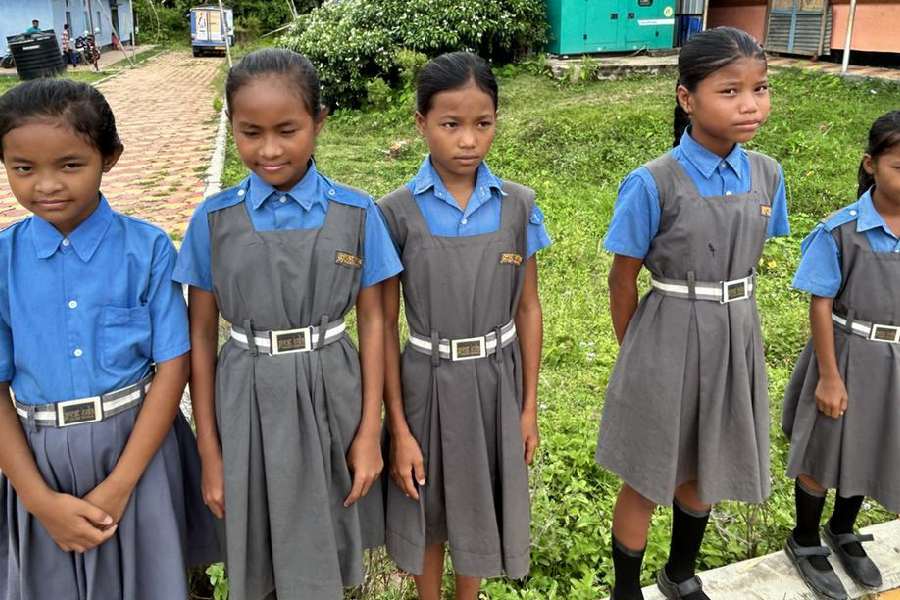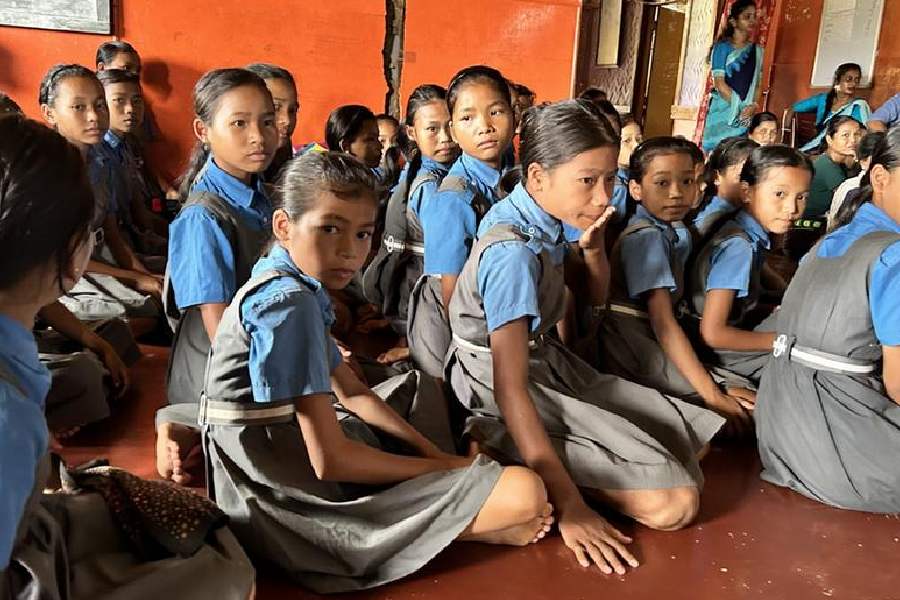Maslan Reang, 13, cannot hold back her happiness on seeing her classmates in school after the weekend. She greets them warmly and looks forward to the English class which is about to begin.
"We are now beginning to write small essays… Sometimes, I make mistakes while using tenses, but I am learning every day. By the end of the year, I hope to be good," Maslan told DW.
Lal Monkima, a class 8 student, is equally excited about attending school. His forte is mathematics.
"I love the subject. I didn't know that problem solving could be so joyful. One day, when I master the subject, I will be a teacher," Monkima says.

The school offers a variety of lessons, including English language and reading Deutsche Welle
Both Maslan and Monkima are students of the Great India Talent School in remote Kashirampara, about 160 kilometers (99.5 miles) from the state capital, Agartala. The school is the first such attempt to bring together tribal children to school.
What started as a modest experiment in 2017, providing lessons to students from kindergarten to class 3, has since grown and the school now has nearly 700 students who can study till class 8.
Who are the Reang tribe?
The first-generation students hail predominantly from the Reang tribe — a designated vulnerable tribal group. The majority of the students are from the Naisingpara and Ashapara refugee camps in Tripura.
The Reangs, numbering over 180,000, are indigenous to northeastern India and have historically resided in parts of Mizoram, Tripura and Assam states.
Those residing in Tripura today have suffered more than two decades of internal displacement and many have fled ethnic persecution, primarily in the neighboring state of Mizoram.
Originally, they are thought to have come from Shan State, Myanmar, in different waves — first making their way to the Chittagong Hill Tracts in Bangladesh before arriving in the southern part of Tripura.
State authorities say education has been a pressing concern for the Reang tribe and, according to a 2001 census, nearly 67% of the Reang population is illiterate.
Ensuring no child is left behind
Shubhrangshu Deb, the school's administrator, said all the students live below the poverty line.
"But we decided they must not be left out," Deb told DW.
"We provide everything for free, from the school kit that includes textbooks, notebooks, uniforms, shoes, socks, sweaters, and school bags…Most importantly, the children are served nutritious mid-day meals which acts as an incentive," he added.
For many children, this is the first and only unlimited meal of the day.
The school is funded by the Akshaya Patra Foundation, the world's largest NGO-run school meal program.
"Many had thought these children would never see the insides of a school. Today, they know how to read and write and talk about hygiene which is also benefiting their families. It is a challenge but we will overcome," Sangeeta Nath, the school's principal, told DW.
A symbol of hope and ambition
Most of the students live in remote and inhospitable areas of Tripura. Setting up a school that would be more accessible to the students was crucial.
"Most of these students do not have to travel far. And that's one reason why we see the school populated and there is nearly 80% attendance on any given day," school teacher Abhijeet Reang told DW.

Many young girls are excited about the new opportunities the school brings Deutsche Welle
India's tribal population stands at 8.9% of the country's 1.4 billion people. A large number of tribal children, however, remain outside the formal education system and are illiterate.
Many tribal families reside in camps in Tripura with limited access to safe drinking water and sanitary systems and are malnourished.
Zaira Moi, a young mother, says she now feels hopeful that her son can grow up educated, go to college and perhaps become a doctor.
"Even if it rains, I accompany him and he is happy to be at school rather than at home," she told DW.
School looks to expand
Last year, India's President Droupadi Murmu invited a group of tribal children from the school to the presidential palace in New Delhi where a select group showcased their talents with song and dance.
"It was the first time we went out and it was great to see Delhi," Nilo Reang, who was part of the entourage, told DW.
Given the initial flush of success, the school management has ambitious plans to construct a three-storey building to begin teaching higher grades, plus adding a residential campus in the future. Work has begun on the new building and is now awaiting a fresh round of funding.
"I never thought the school would come up so well. My only wish now is students asking their teachers why is there a weekend... we love school," says school administrator Deb.











